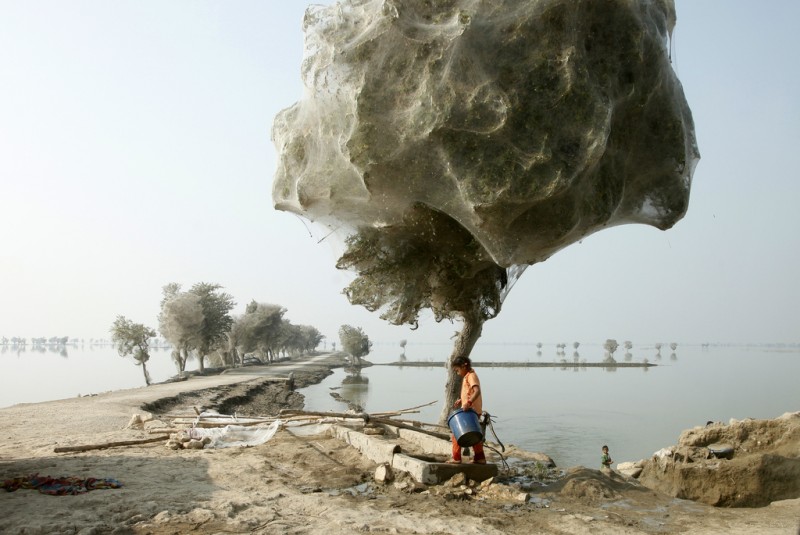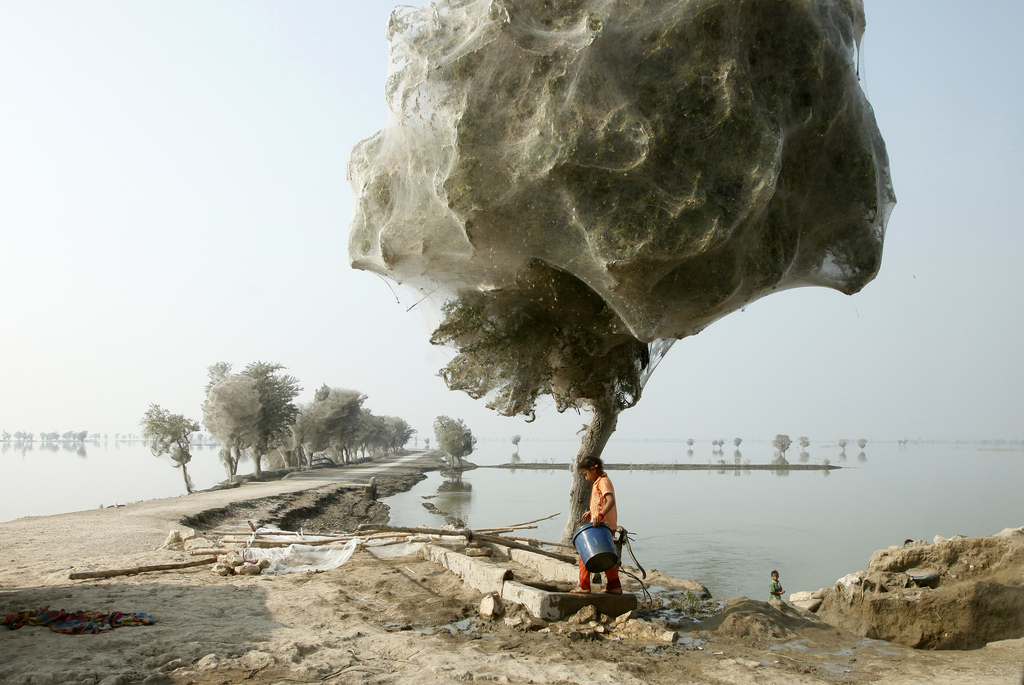
© Department for International Development
Vagabondish is reader-supported. When you buy through links on our site, we may earn a small affiliate commission. Read our disclosure.
From the ‘In Case You Missed It’ files:
An unexpected side-effect of the flooding in parts of Pakistan has been that millions of spiders climbed up into the trees to escape the rising flood waters.
Because of the scale of the flooding and the fact that the water has taken so long to recede, many trees have become cocooned in spiders webs. People in this part of Sindh have never seen this phenonemon before – but they also report that there are now less mosquitos than they would expect, given the amoungt of stagnant, standing water that is around.
It is thought that the mosquitos are getting caught in the webs and may be reducing the risk of malaria, which would be one blessing for the people of Sindh, facing so many other hardships after the floods.
Nature works in truly unexpected and fascinating ways. The full gallery is stunning.


